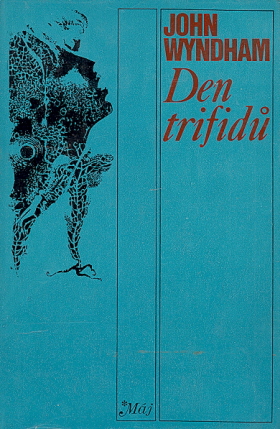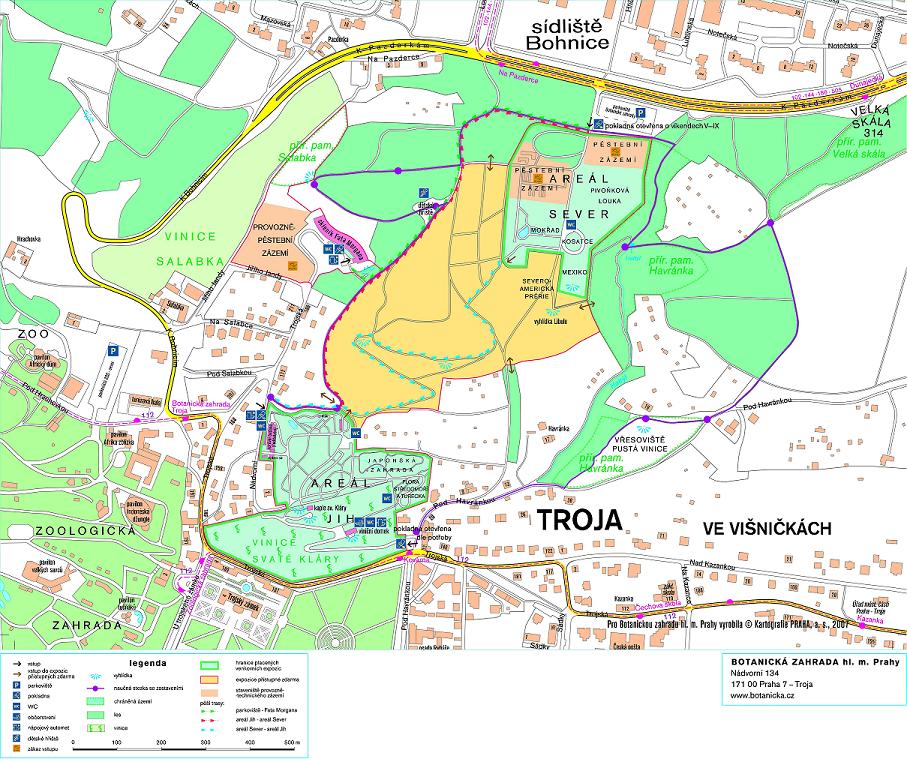CZE

John Wyndham, The Day of the Triffids:
"ZACÁTEK KONCE
Kdyz se probudíte v den, o kterém náhodou víte, ze je to streda,
a vsechno kolem pripomíná nedeli, zacnete tusit, ze neco není
v porádku.
Cítil jsem to od okamziku, kdy jsem se probudil. A presto jsem
o tom zapochyboval, kdyz jsem se docista probral a zacal uvazovat
strízliveji. Vsechno nasvedcovalo tomu, ze jsem na omylu já, a ne
ostatní - prestoze jsem nechápal, jak je to mozné. Zmítán
pochybnostmi, vyckával jsem vecí prístích. A pak se mi dostalo
první spetky objektivního dukazu - kdesi v dálce odbyly hodiny
osmou, alespon se mi zdálo, ze tolik úderu slysím. Napjate
a s podezrením jsem naslouchal dále. Vzápetí se ozvaly hlasité,
rozhodné údery dalsích hodin. Zvolna a nesmlouvave odbíjely
osmou. To jsem uz vedel, ze se muselo prihodit neco vázného.
Ze jsem propásl konec sveta - tedy konec sveta, jaký jsem znal
po dobu bezmála triceti let - to byla pouhá náhoda: ostatne jako
vetsina stastných úniku. Jak uz to bývá, neustále lezí spousta lidí
v nemocnici, a priblizne pred týdnem si zákon pravdepodobnosti
vybral za jednoho z nich mne. Mohlo k tomu lehce dojít o týden
drív - v tom prípade bych nyní tyto rádky nepsal; vubec bych tady
nebyl. Ale náhoda chtela, nejen abych byl v nemocnici práve v této
urcité dobe, ale aby také moje oci, a vlastne celá hlava, byly
zamotány do obvazu - a nezbývá mi proto nez dekovat tomu, kdo
o pravdepodobnosti rozhoduje, at uz je to kdokoli. Nicméne onoho
rána jsem byl podrázdený a zmatený tím, co se to u sta hromu
deje, nebot jsem tam lezel dost dlouho, abych vedel, ze vedle
vrchní sestry jsou hodiny tou nejposvátnejsí vecí v celém spitále..."
Botanicka zahrada
Není to tak davno, co se trifidi pestovali ve velkem. Po nestastnych událostech, popsaných v dile Den trifidu, a po opetovném rozmachu lidstva, byli trifidi do jednoho zlikvidovani a jejich pestovani bylo celosvetove zakazano. Proto ani v nedaleke Botanicke zahrade jiz zadneho trifida nenajdete, ackoliv drive se zde jejich výzkumem intenzivne zabyvali.
Real:
Kousek odsud se nachazi Botanicka zahrada. Muzete navstivit budt primo ji, nebo jeji prirodni areal.
Od dubna 2006 je v nem obnovena naucna stezka, ktera prochazi zajimavym uzemim, ktere je zajimave jak biologicky, geomorfologicky, historicky tak i ekologicky. Nejcennejsimi lokalitami jsou chranena uzemi - prirodni pamatky Havranka, Salabka a Velka skala. Naucna stezka zacina na krizovatce cesty a Nadvorna ulice (25 m od vchodu na Areál JIH). Trasa je dlouha zhruba 3km a je po ni rozmisteno nekolik informacnich panelu, ze kterych se dovite vice o teto lokalite a jejich zajimavostech.
Geologicky nejzajímavejší zastavení na trase naucné stezky je prírodní památka Velká skála, která je soucasne nejvýše položeným místem naucné stezky (300–340 m). Celé území tvorí výrazný skalní hreben, zcásti ukrytý mezi stromy, tvorený buližníky (silicity) a na úpatí skály buližníkovou sutí. Masiv vystupuje z uloženin spraší, sprašových a píscitých hlín, v severovýchodní cásti je prekrytý píscitými slínovci.
Za historií a puvodem celého masivu je nutné se vypravit až do starohor (tj. do doby pred 600 miliony lety). V té dobe se zacínal z termálních roztoku (vyverajících vulkanickou cinností) vytváret na dne starohorního more základ kremité hmoty, ze které jsou buližníky tvoreny. Buližníky vznikaly bud v bezprostrední blízkosti termálního výronu srážením a dehydratací kremité hmoty (buližník je potom svetle zbarven) nebo dále od zdroje termálního výronu za menší teploty a za úcasti ras, sinic a jiných organismu (tmave zbarvený buližník). Na dne starohorního more vznikaly i další nové horniny (napr. proterozoické bridlice nebo slepence).
Horotvorné pohyby pred 550 miliony lety zaprícinily ústup starohorního more, zvrásnení a slabou premenu hornin. Souší nezustala Trojská kotlina príliš dlouho, za 55 milionu let (tj. pred 495 miliony lety) bylo území zalito prvohorním morem, ze kterého, mimo dalších buližníkových suku, vycnívala i Velká skála. V období starších prvohor pokracovalo usazování a vulkanismus. Pusobením hercynského vrásnení ustoupilo i prvohorní more (pred 360–380 miliony lety). Po dobu dalších 250 miliony lety byla Velká skála a i další buližníkové suky v Ceském masivu ovlivnována erozí. Odnosem usazenin pusobením vetru a vody je Velká skála vypreparována z mekcích hornin. Poté, nekdy pred 100 miliony lety, byla Velká skála vlivem poklesu území severní poloviny Cech a cásti Moravy zalita druhohorním morem a soucasne s tím prekryta vrstvou usazenin. Po asi 15 milionech let more z Cech ustoupilo, dno more se zvedlo nad hladinu, nedošlo ke zvrásnení. Starší horniny jsou opet obnaženy v tretihorách erozní cinností vody. Ve ctvrtohorách se zejména vlivem strídání studeného a teplého klimatu dále zvýraznuje erozní cinnost.

Serie Den trifidu:
Den trifidu I - Botanicka zahrada
Den trifidu II - Stare pestirny
Den trifidu III - Lihne
Den trifidu IV - Vyzkumna laborator (final)
ENG
(sorry – my english ist very bad, and the automatic translator is poor too)
Natural Monument Large Rock
(earthcache infotable position)
Geologically interesting stops on the trail is a natural monument of Great Rock, which is also the highest point of trails (300-340 m). The whole area forms a distinctive rocky ridge, partially hidden among trees, consisting Lydites (cherts) and at the foot of the lydites rock debris. Timber out of the loess deposits, loess and sandy clay, in the northeastern part is covered with sandy marl.
For the history and origin of the mass is necessary to go to Prekambrium (ie until 600 million years ago). At that time, started from thermal solutions (stemming volcanic activity) to create the bottom of the sea base siliceous matter from which they are formed Lydites. Lydites originated either in the immediate vicinity of the outpouring of thermal coagulation and dehydration of siliceous materials (Lydites is then light color) or further from the source of thermal blow for smaller temperatures and the presence of algae, cyanobacteria and other organisms (dark colored Lydites). At the bottom of the sea arose other new rock (eg, Proterozoic shales and conglomerates).
Rock´s movements from 550 million years ago caused the retreat of the sea, wrinkles and poor conversion of rocks. Sous Valley Troy stayed too long, for 55 million years (ie before 495 million years ago) was sealed the Paleozoic sea, from which, among other lydites knots, sticking and Great Rock. During the Early Paleozoic and continued establishment of volcanism. Effects of the Hercynian orogeny and Paleozoic sea receded (360-380 million years ago).
After a further 250 million years ago was the Great Rock and even more lydites knots in the Czech Massif affected by erosion. Sediment removal by the wind and water is a Great Rock dissected from softer rocks.
Then, sometime before 100 million years ago, was due to Great Rock fall in the northern half of Bohemia and Moravia, parts embedded in artificial Mesozoic sea and along with covered with a layer of sediment. After about 15 million years the sea receded from Bohemia, the bottom of the sea rose above the surface, to avoid wrinkling. Older rocks are again exposed in the Tertiary erosion of water. In the Quaternary, especially due to alternating cold and warm climate further enhances erosion.
Nature Trail
On the trail you'll pass through suburban preserved, in the past intensively farmed, farmland with various homesteads, around which the fragments still in gardens, orchards, vineyards and pastures. The whole area is valuable both ecologically and biologically, geomorphological and largely well historically. The most valuable sites along the way visit the protected areas - natural monument Havranek, Salabka and Big Rock.
Nature Trail begins at the intersection of routes and prefixed World.png street about 25 meters from the entrance to the outdoor exposure surface area SOUTH. On the trail is about 3 km deployed a total of 10 information panels and the skyline of the moor Barren vineyards.
On the whole route, you should investigate at least 2 hours of time, it is quite difficult climb from the initial panel prefixed by pits and river cobbles and pebbles to the playground. The sections are also demanding a sharp exit from the natural springs Haltýr large rock monument.
The entire route is well marked by a classic symbol of nature trails - a white square with a green stripe head diagonally. Nature Trail ends at the bus stop 112 "Smithy." Route, you can also leave in the middle - from the Botanical Garden parking lot, the trail passes through the lower part, you can leave on a bus 144 ride to metro C Kobylisy.
The most interesting places on the trail
The trail to visit only two moors in Prague. Natural heritage and natural heritage Salabka Havranek, where heathers grow in the area locally called Barren vineyards. With a smaller crop of heather grow here in Troy and the Haltýr springs and Large rocks.
Natural Monument Salabka
The geological base consists Lydites and slate. Parent material is not covered by any quaternary deposits only shallow layers of weathering and soil type. Therefore, we can observe the direct influence of the mother rock of vegetation cover. Chert outcrops on acid thrive heather (Calluna vulgaris), which have often grows with Deschampsia flexuosa (Avenella flexuosa). Shale outcrops indicate most communities with dominance Brachypodium pinnatum and Scabiosa ochroleuca and other accompanying species such as Festuca rupicola, Arrhenatherum elatius, Helictotrichon pratense or Lotus corniculatus. Striking in view of the end of summer draws graceful catshark (Eryngium campestre). The maintenance of protected areas are both heathland during June and July grazed herd of goats and sheep. This return to traditional farming occurs rejuvenate stands of heather and excellent all-fed young seeding shrubs that would otherwise have to trimming.
Natural Monument Havranek - valley Haltýr
This protected area is composed of two distinct parts - a spring creek and Haltýr Heath Barren vineyards.
In Haltýri is protected several sources, the strongest of which was accumulated in the past the tank and used for the needs of Troja Castle. Today, it is protected by a wooden roof and the vault is already beginning to warp.
The wetland vegetation is dominated by spring glauca rushes (Juncus inflexus) and hairy willowherb (Epilobium hirsutum), the other species you can see the white flowering Tortoiseshell (Filipendula ulmaria), marsh horsetail (Equisetum palustre) or early spring blooming white butterbur (Petasites albus).
The wetland also contains traces of the residence of feral pigs - the rear springs is Kaliste and columns on the railing that surrounds a wetland, is regularly found traces of mud, as there are wild boar leaves, when rubbed on the posts.
Natural Monument Havranek - Heath Barren vineyards
On a mineral poor grows Chert outcrops as well as Salabce, Calluna vulgaris (Calluna vulgaris). Outside the dominant heather and Deschampsia flexuosa (Avenella flexuosa) are growing such Hieracium Pilosella, acidulous general (acetosella vulgaris) and bell rotundifolia (Campanula rotundifolia).
Part of the protected areas with deeper soil overgrown shrubs warm, mainly blackthorn (Prunus spinosa), wild roses (Rosa canina) and hawthorn (Crataegus sp.).
Heath Barren vineyards in recent years considerably damaged - cyclists and horse riders to shorten the path of heather, not respect, it is a valuable protected area and not the track. Therefore, in April 2006 a large part of Barren vineyards rehabilitated, erosion rill was driven with substrate, which was covered with coconut matting, and then sown.
Natural Monument Large Rock
(earthcache infotable position)
is geologically interesting, while the highest stop on the route (top of big rock reaches 314 m above sea level). The whole area forms a distinctive rocky ridge, partially hidden among trees, consisting Lydites (cherts) and at the foot of the lydites debris. Timber out of the loess sediments.
Great rock vegetation is very poor and largely composed of non-indigenous communities. Covers the sub-base of the slope planted larch (Larix decidua), locust (Robinia pseudoacacia) and black pine (Pinus nigra). Indigenous communities can be found in the highest parts of the wood. They are particularly dominant vegetation with heather (Calluna vulgaris) and other accompanying species that are already familiar with the heath Salabka or Barren vineyards.
To log this cache you have to
answer following questions:
1. How many times has become a regression of the sea at this location?
2. What are the different mechanisms of differently colored silicites?
3. What is the main compound Lydit?
